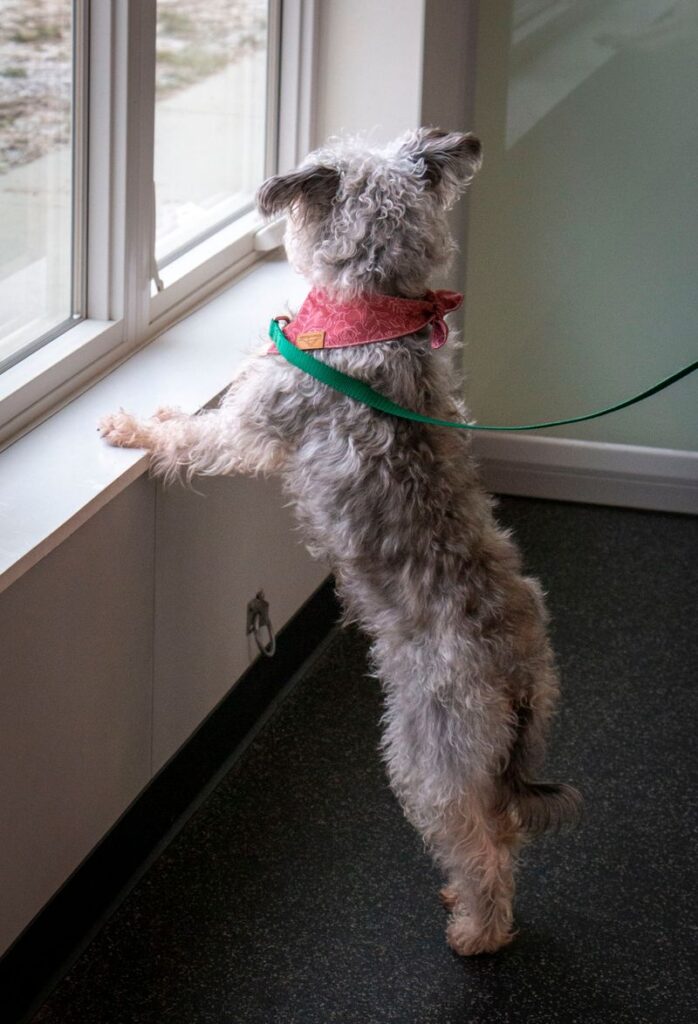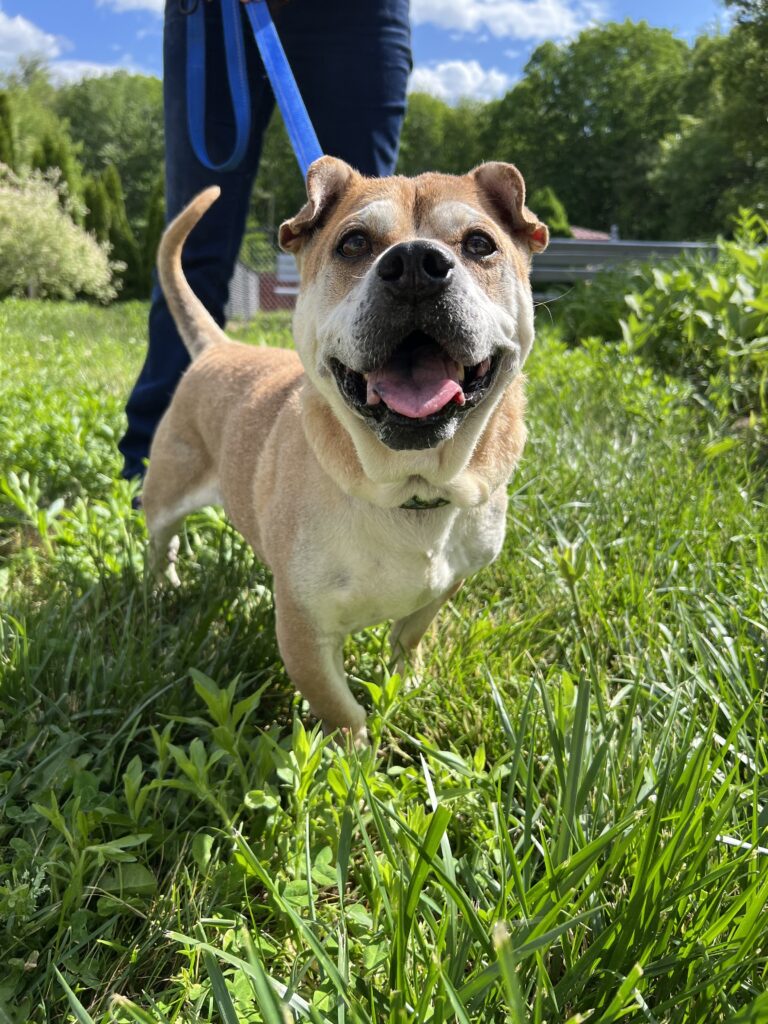How to Tame Alert Barking

We all get excited when we hear the delivery truck pull up to the curb. But do you have a dog who gets a little too excited? Is there a lot of barking, frantic window watching, or jumping up on people? If so, we call this ‘alert barking’ and it can be a very frustrating behavior to try to work through with your dog. After all, sometimes alert barking can be a good thing. For example, when a stranger comes to the door and we need to be alerted. Often, though, our dogs can quickly spiral into barking at everything that catches their eye, and this is when the behavior turns into a problem. Luckily, we know some simple and helpful ways to tame alert barking in your dog!
Identify why they’re alerting.
The first rule to taming alert barking is to understand why your dog is doing it in the first place. Often times it is just because they hear or see something new in or around the home, and they want to alert you. Other times it can be a reflex to a learned behavior, such as barking for attention. If you say your dog’s name when they bark, come running over, or provide them with attention of any kind, you’re unintentionally bolstering the behavior. Remember, even ‘bad’ attention is still attention to your dog!
Sometimes, your dog might alert bark out of fear or anxiety of a perceived threat. If your dog seems genuinely afraid of people or objects going by your house, this could be a bigger problem. More often than not, however, dogs alert bark because it’s a self-reinforcing behavior. Your dog doesn’t understand that the delivery man was always going to drive away after dropping off the package. Nor that your neighbors walking by were going to keep walking anyway. In your dog’s mind, their barking is what made that happen and so, they keep barking.
How to tame the problem.
Maneuver the environment.
The first step to taming alert barking is also often the only step you have to take. By changing or maneuvering the environment, you can nip alert barking in the bud. This can mean closing the curtains, closing the door, putting some frosted cling paper on the windows, moving your dog’s bed to a room that doesn’t face the street, etc. Anything to keep your dog from physically seeing any triggers. Once they no longer see the triggers, your dog won’t react and the practice of barking eventually goes away.

Manage the behavior.
If you’d like to take this a step further and help your dog to become more comfortable with seeing triggers, the next step would be behavior modification. To practice this, get some high value treats that your dog loves. Sit with them in a room where you know they will eventually see some triggers. Wait for a car, a person, or another dog to walk by the window and have your treats ready. The key is that you must see these triggers before your dog does, so be vigilant! Before your dog can even bark, start giving them treats. As the trigger passes, continually treat your dog until the trigger is gone. Once it’s out of sight, stop the treats. This will condition your dog to think that when cars, people, other pets, etc. walk by that they get rewarded. We want them to associate it with something positive!
Reward disengagement.
Once you notice your dog start to become calmer when triggers go by, you can reward them for their disengagement. For example, you might start to notice your dog checking in with you when a trigger goes by. If your dog is used to getting a cookie when the mail truck approaches, they will become too distracted by the thought of treats to bark. Therefore, they may look at you when a trigger comes into view expecting a treat. Reward them for this and give them the cookie! As time goes by, make sure to distance yourself from the door or the window. This way, when the trigger comes into view, your dog will have to physically move away to come and seek you. We want them to be disengaged!
In conclusion.
Alert barking can happen for various reasons, and it’s important to identify why your dog is doing it. Once we understand the why, we can work on the how. Overall, blocking outside stimulus will go a long way in taming alert barking. However, sometimes it may take a few more steps. Rewarding your dog for not barking when triggers go by is key. Reward them only when the trigger is in view, and then stop. Also make sure to reward them when they look for you to check in. Eventually, the behavior of not barking will be engrained, and you can stop treating all together.
We hope you found this blog on how to tame alert barking helpful! For more questions or concerns, you can always write to our training team for advice. We’re happy to help!



